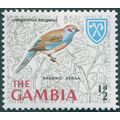ARABIAN CAMEL 1894 Mammal - Dromedary - Ungulate VICTORIAN ENGRAVING
- Skick : Begagnad
- Frakt : 2 dagar
- Märke : Inga
- ID# : 224764452
- Antal : 1 produkt
- Visningar : 35
- Plats : Storbritannien

- Säljare : gregedwards (+22)
- Streckkod : Inga
- Start : Tis 12 nov 2024 12:10:10 (CEST)
- Stängning : Pågår till såld
- Tid kvar : Pågår tills såld
 för 1 föremål ändra
för 1 föremål ändra
Frakt Räknare
Mer annonser från denna säljare se alla
Säljarens Beskrivning
Original 1894 7 3/4 inch x 5 1/8 inch engraving titled ARABIAN CAMEL.
The dromedary, also called the Arabian camel (Camelus dromedarius), is a large, even-toed ungulate with one hump on its back. The dromedary is the smallest of the three species of camel; adult males stand 5 feet 10 inches – 6 feet 6 inches at the shoulder, while females are 5 feet 7 inches –6 feet 3 inches tall. The species' distinctive features include its long, curved neck, narrow chest, a single hump (compared with two on the Bactrian camel and wild Bactrian camel), and long hairs on the throat, shoulders and hump. The coat is generally a shade of brown. The hump, 8 inches tall or more, is made of fat bound together by fibrous tissue..
Engraved by Friedrich Specht (1839 - 1919). A German painter and natural history illustrator. He held his first exhibition at the Stuttgart Art Academy. He provided illustrations of animals and landscapes for a large number of zoology and veterinary science publications, notably for the first edition of Brehms Tierleben (1864–69) conceived by Alfred Edmund Brehm, Brockhaus and Efron Encyclopedic Dictionary (1890—1907) and Richard Lydekker's Royal Natural History (1894–96).
This illustration is taken from ‘The Royal Natural History’ edited by Richard Lydekker and published by Frederick Warne & Co. London and New York, 1894.
The page size is 10 inch x 6 5/8 inch
The engraving is in very good condition. Reverse side blank.
The dromedary, also called the Arabian camel (Camelus dromedarius), is a large, even-toed ungulate with one hump on its back. The dromedary is the smallest of the three species of camel; adult males stand 5 feet 10 inches – 6 feet 6 inches at the shoulder, while females are 5 feet 7 inches –6 feet 3 inches tall. The species' distinctive features include its long, curved neck, narrow chest, a single hump (compared with two on the Bactrian camel and wild Bactrian camel), and long hairs on the throat, shoulders and hump. The coat is generally a shade of brown. The hump, 8 inches tall or more, is made of fat bound together by fibrous tissue..
Engraved by Friedrich Specht (1839 - 1919). A German painter and natural history illustrator. He held his first exhibition at the Stuttgart Art Academy. He provided illustrations of animals and landscapes for a large number of zoology and veterinary science publications, notably for the first edition of Brehms Tierleben (1864–69) conceived by Alfred Edmund Brehm, Brockhaus and Efron Encyclopedic Dictionary (1890—1907) and Richard Lydekker's Royal Natural History (1894–96).
This illustration is taken from ‘The Royal Natural History’ edited by Richard Lydekker and published by Frederick Warne & Co. London and New York, 1894.
The page size is 10 inch x 6 5/8 inch
The engraving is in very good condition. Reverse side blank.
Annonsinformation
| Annonstyp | Galleriannons |
| Annons-ID#: | 224764452 |
| Starttid | Tis 12 nov 2024 12:10:10 (CEST) |
| Sluttid | Pågår till såld |
| Startbud | Fast pris (ingen budgivning) |
| Produktvillkor | Begagnad |
| Bud | 0 |
| Visningar | 35 |
| Avsändningstid (inkluderar inte söndagar) | 2 dagar |
| Antal | 1 |
| Plats | Storbritannien |
| Auto-förläng | Nej |
| Listed By | !Title |





















